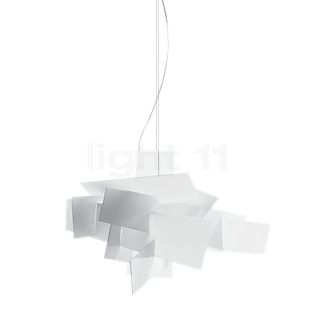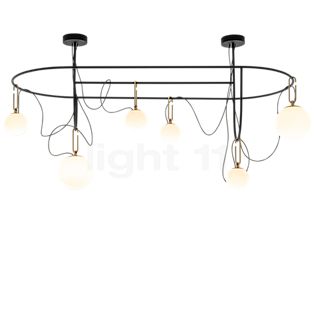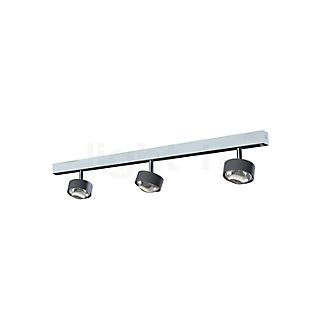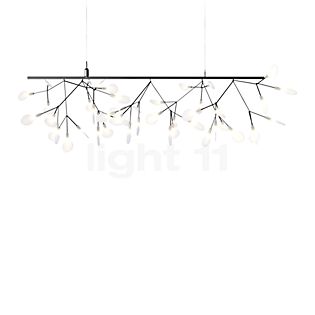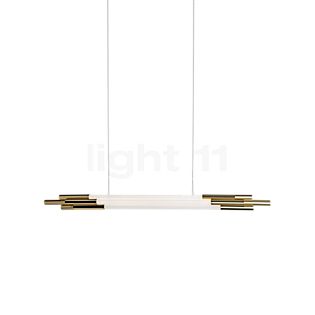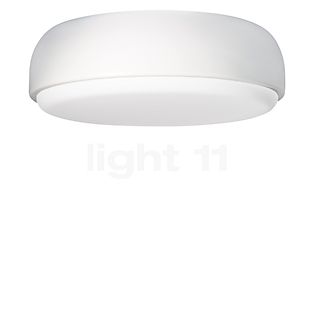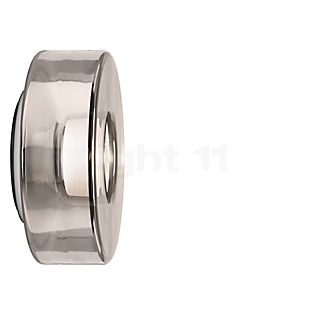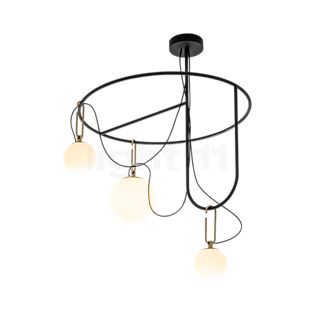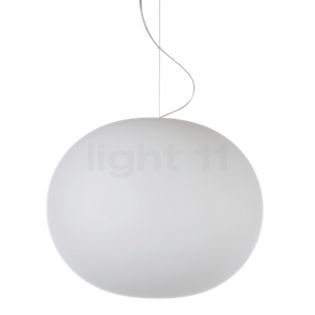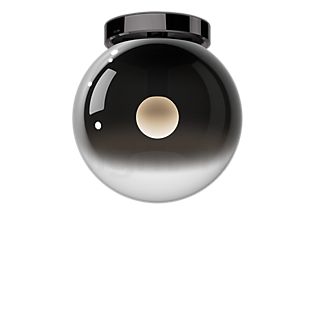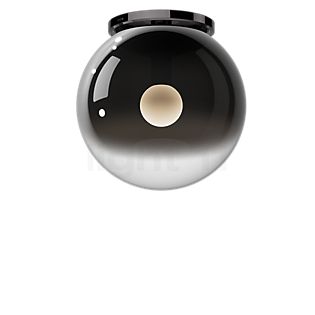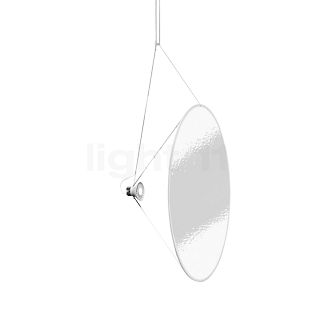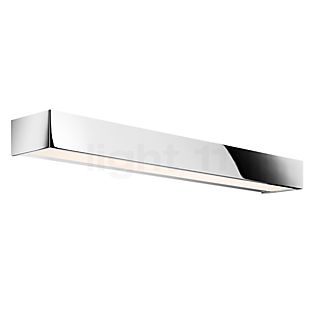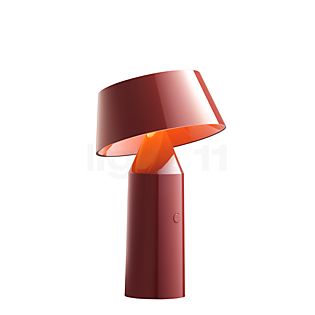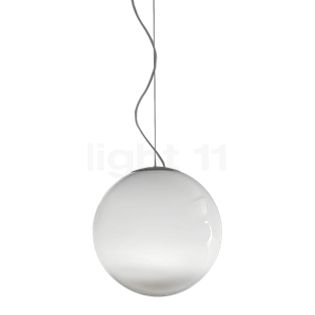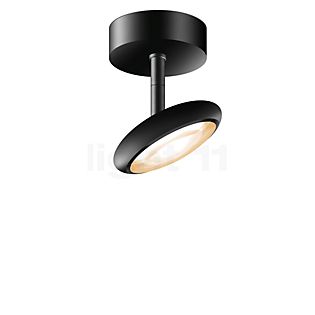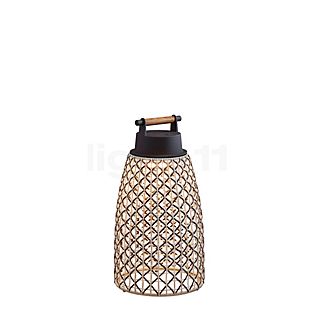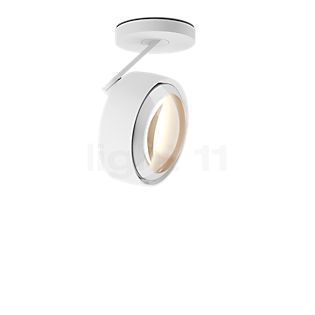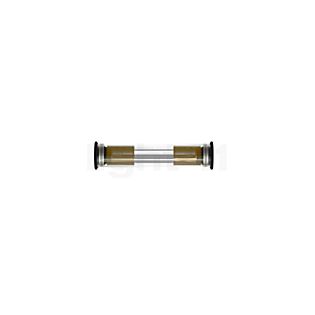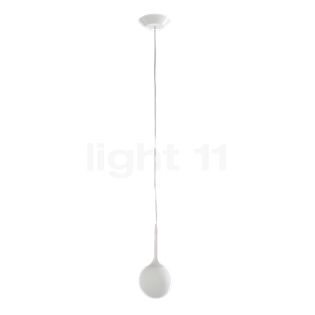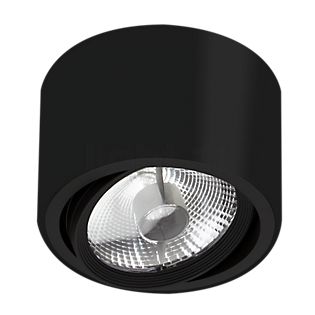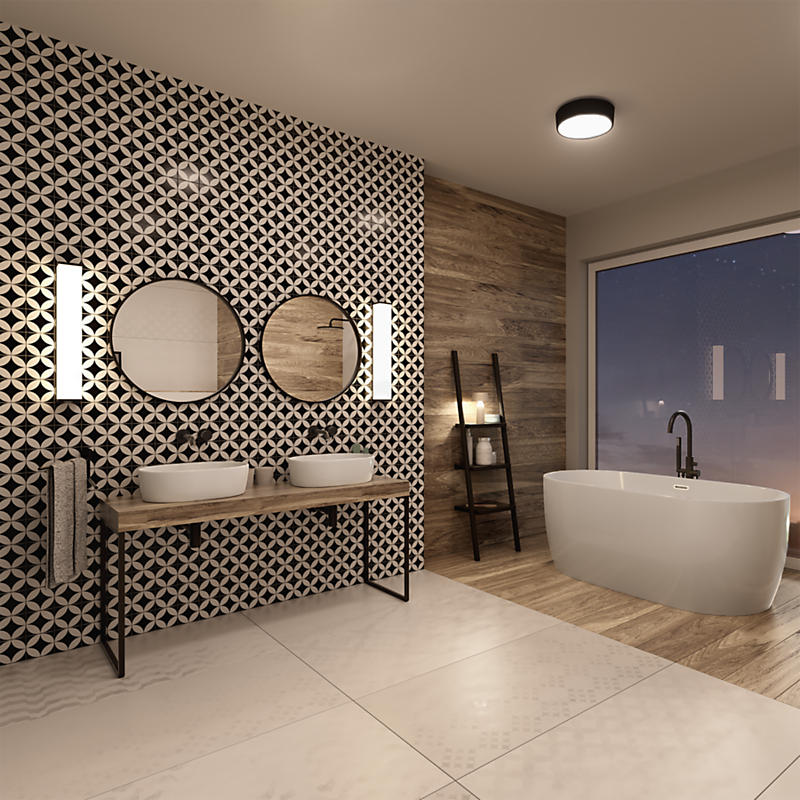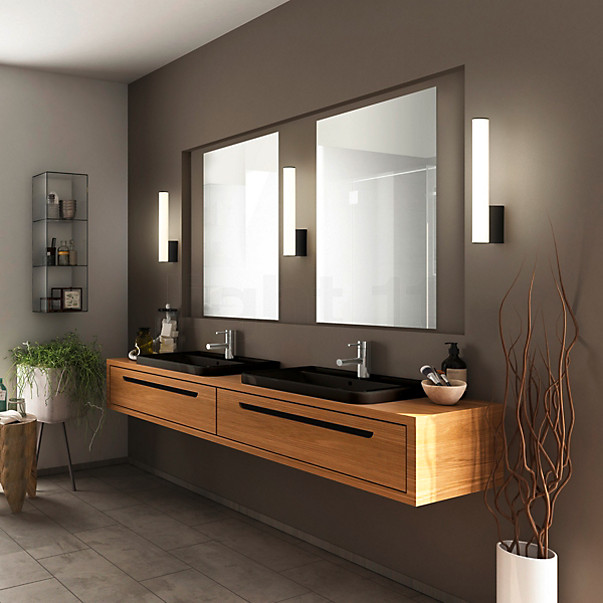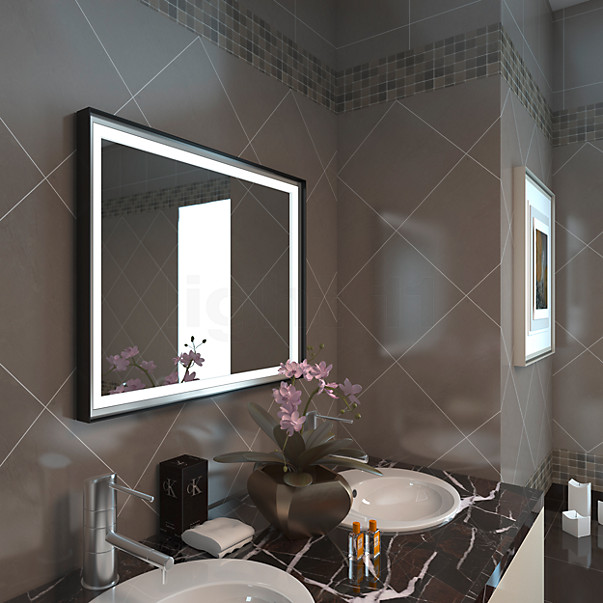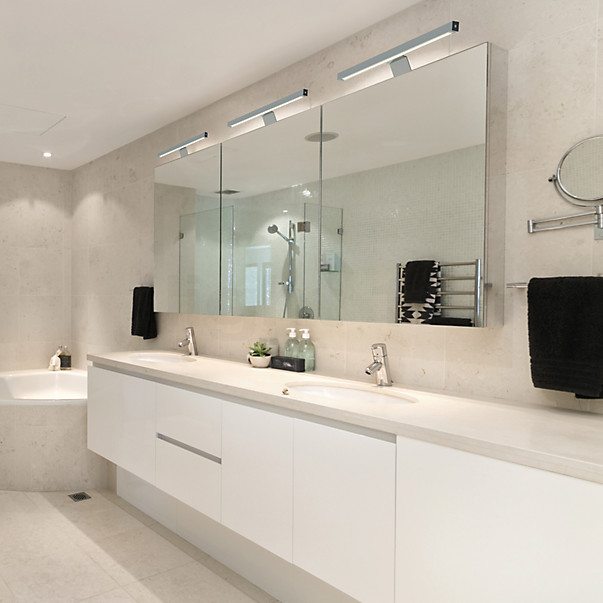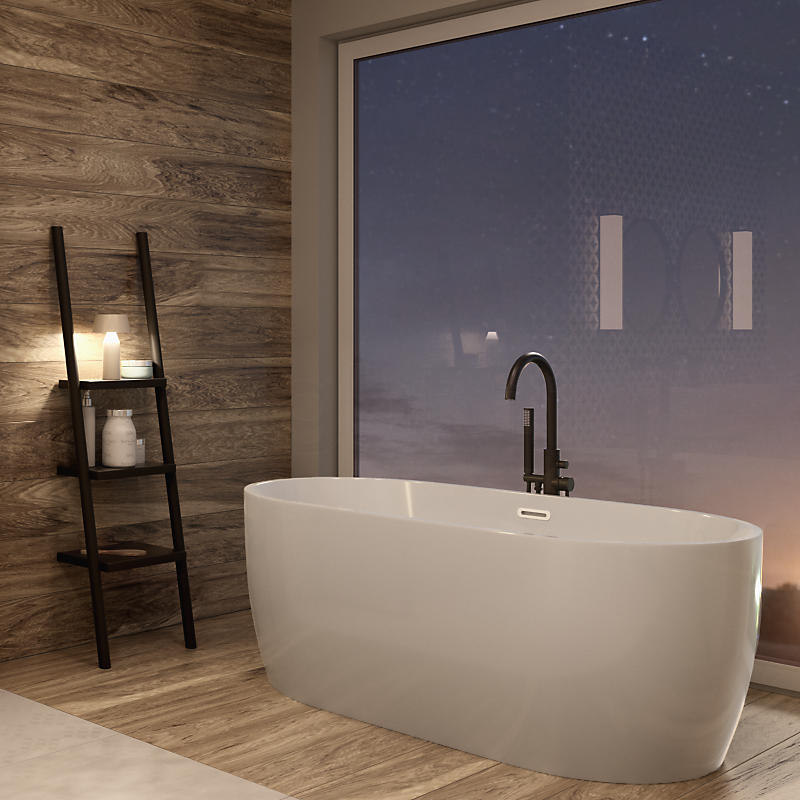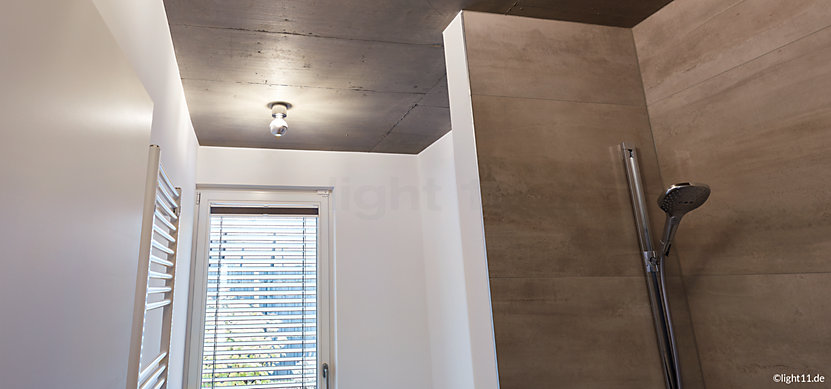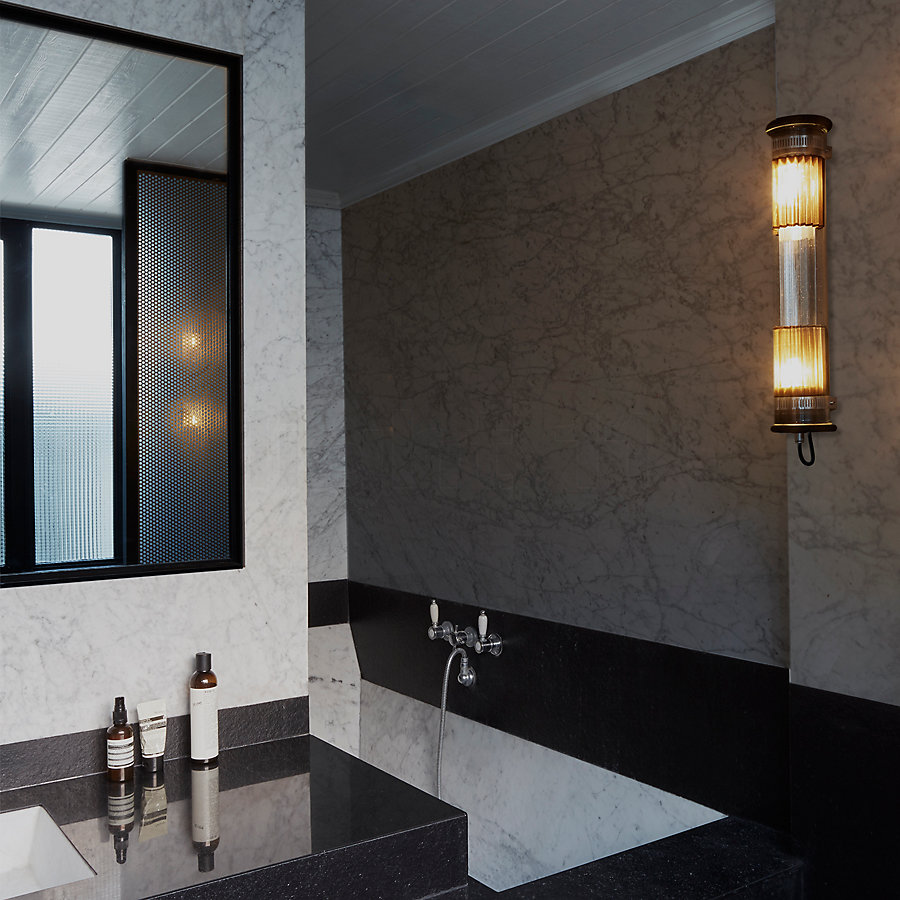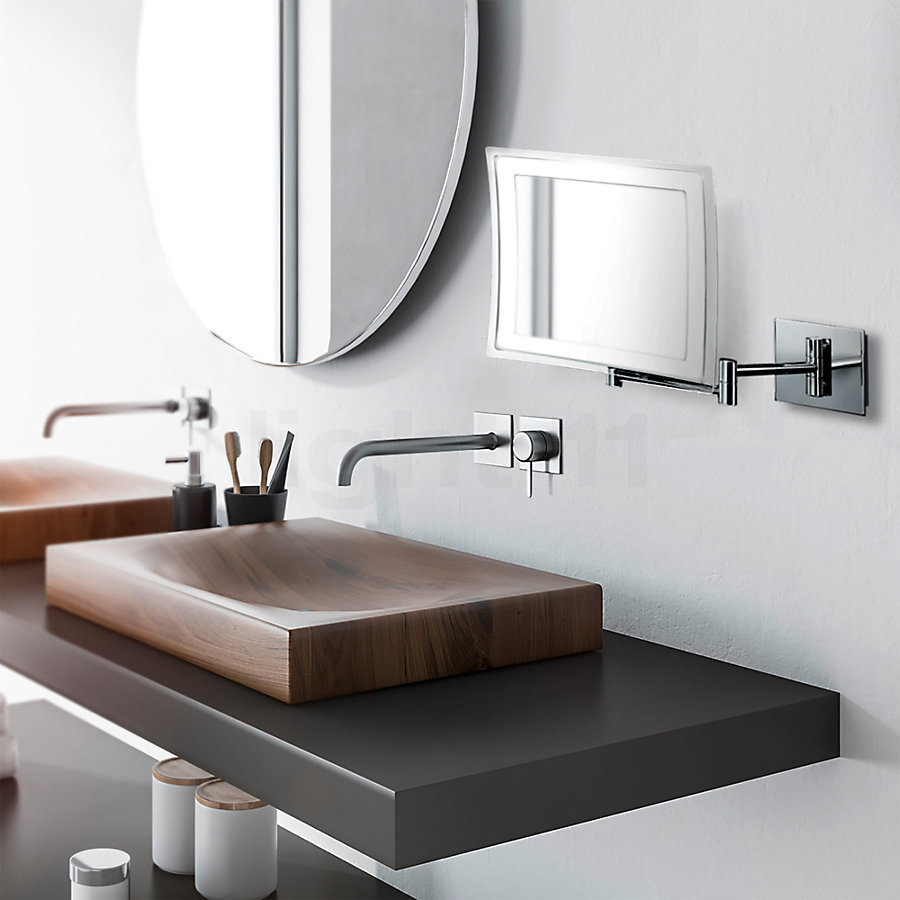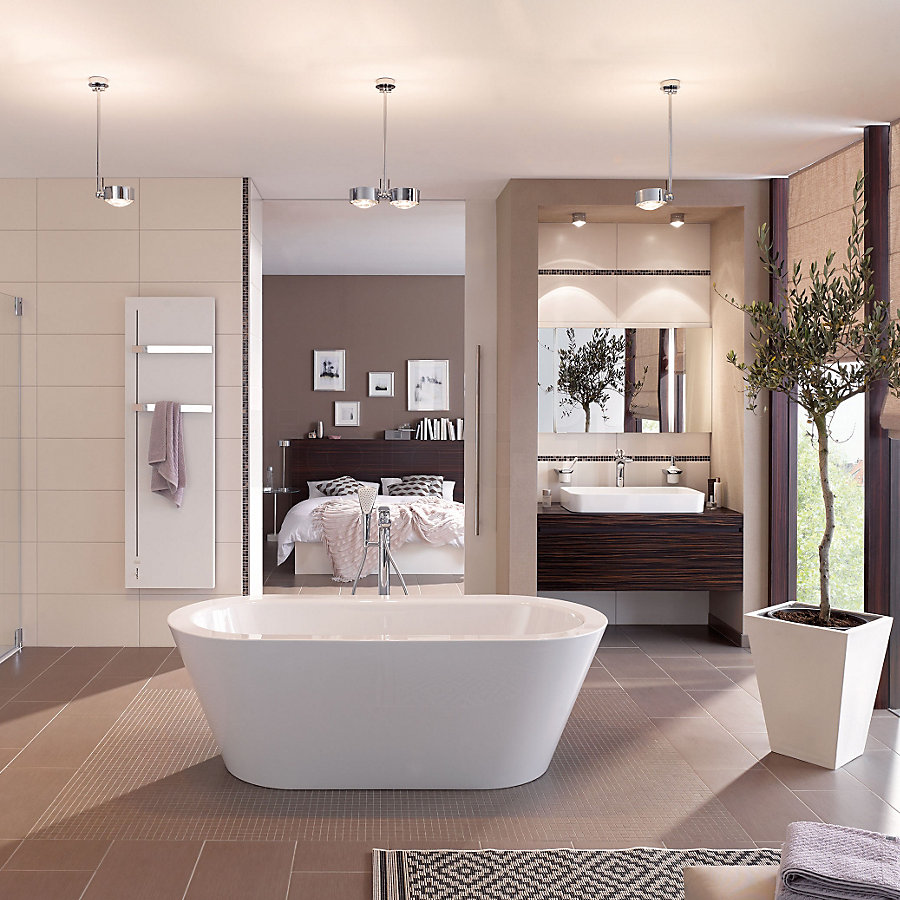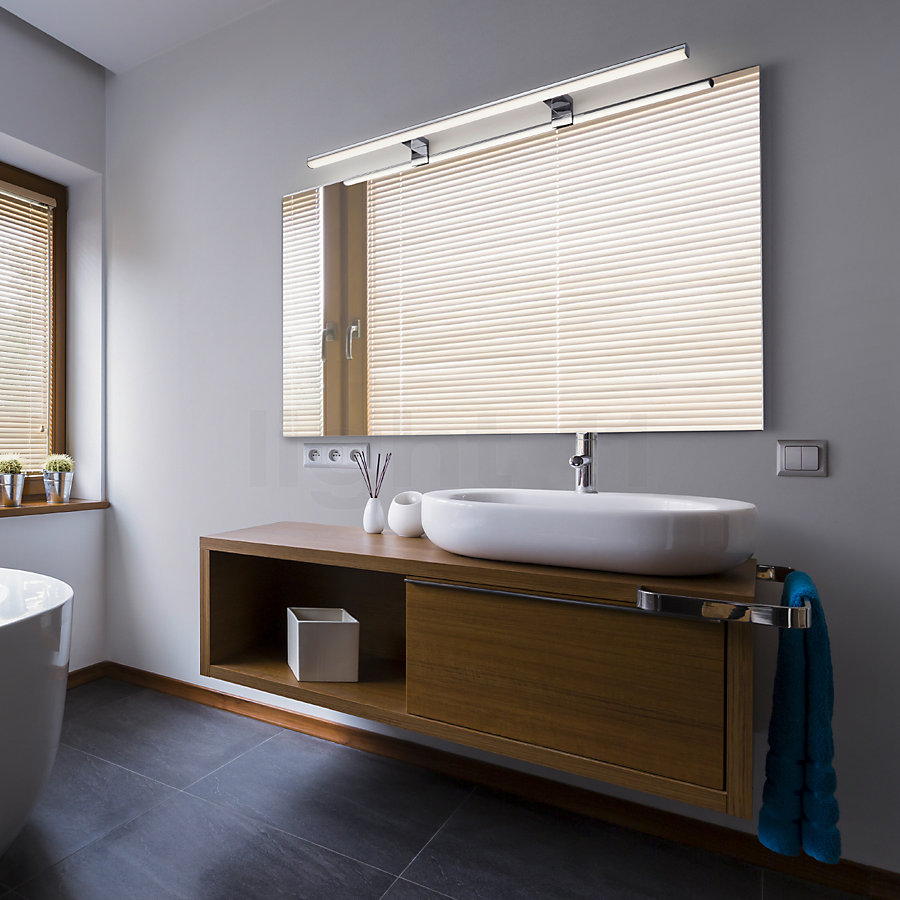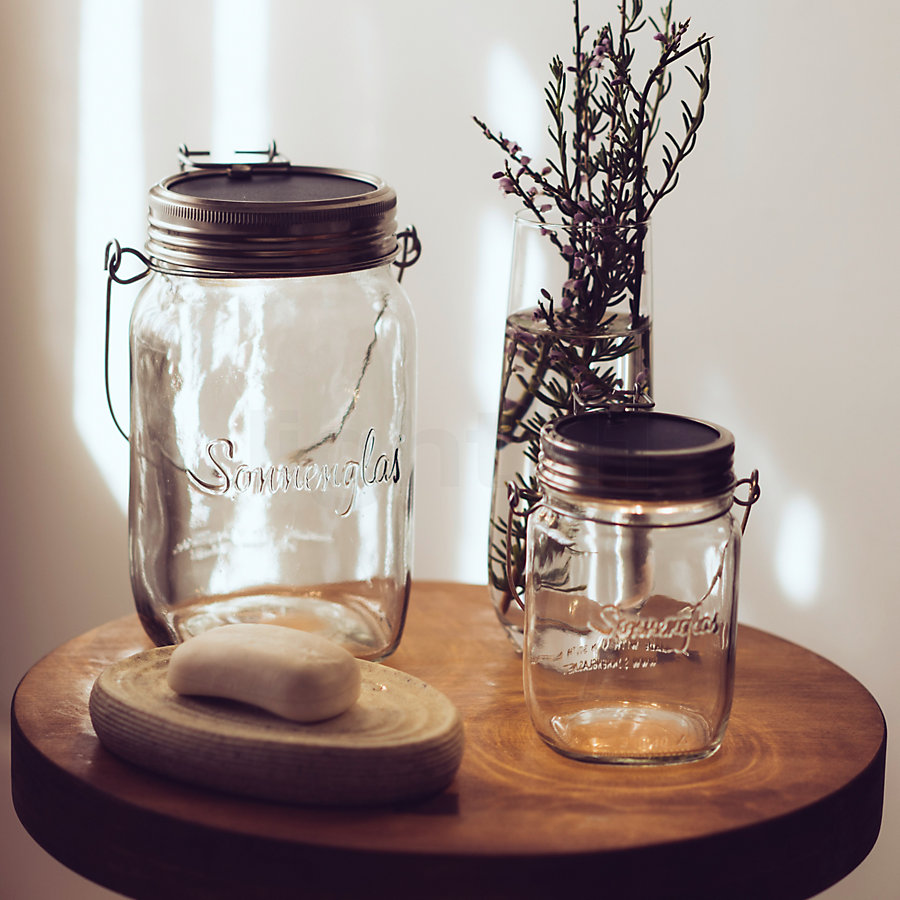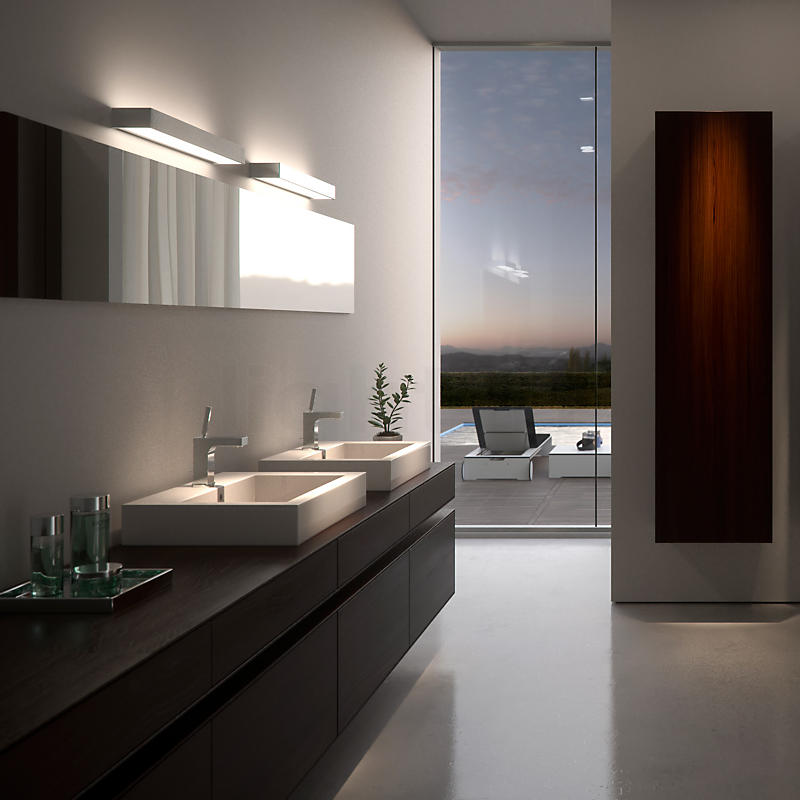LED bathroom lighting and lamps for bathrooms
Which part of your bathroom would you like to illuminate?
Bathroom lamps – our bestsellers
Bathroom lights – maximum security and lighting quality for relaxing daily hygiene and beauty routines
In the bathroom, we place particularly high demands on lighting – for several reasons. First, the safety aspect: all electric devices must deal with the room’s level of humidity. Therefore you should install bathroom lamps with a higher protection type and class in the area around the shower and the tub. Outside of these protection zones, no special protection properties are required from luminaires.
Another important criterion is the light quality: putting on make-up, shaving and toothbrushing are everyday activities which require good light. So, it is essential to have low-shadow bathroom lamps with excellent color rendering. That applies in particular for zone lighting around the mirror. Mirror lighting should be completed by a room light which provides general brightness, for example a ceiling light for the bathroom, or spotlights and spots. For adding an extra touch of spa feeling to your bathroom, also use some mood light. A table lamp or a battery light giving diffuse, soft light will be perfect for this purpose.
Discover the multiple possibilities of bathroom lighting and put your ideas into practice with light11 bathroom lamps!
Room lighting for the bathroom
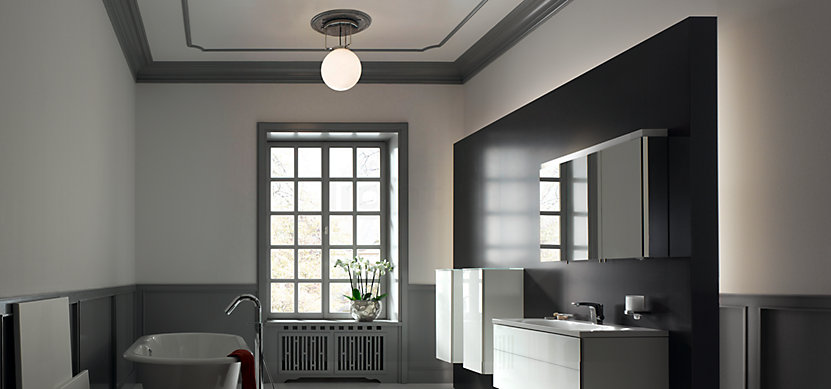
Zone lighting for the bathroom
Mood lighting for the bathroom
When retreating to your bathroom for a relaxing bubble bath, mood light is a must. A dim and not too bright light will create a cozy atmosphere which is just right for relaxing body and soul.
This spa-like experience in your very own bathroom can be achieved through table and battery lamps shedding a soft and diffuse light. You can place them on a shelf or the windowsill and simply enjoy the warm and pleasant atmosphere.
Different lighting types for the bathroom
Frequently asked questions to our lighting experts
Anja Schuh
Which lamps can be used in the bathroom?
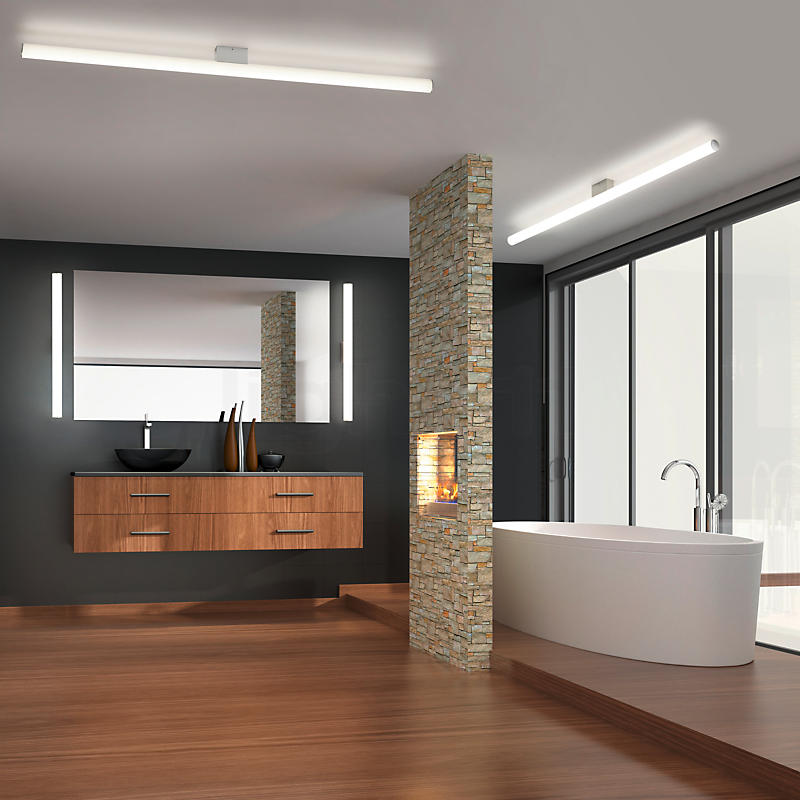
There are a lot more kinds of luminaires to be considered for use in the bathroom than many people are thinking. For there is no special protection type or protection class required from bathroom lamps. With one notable exception: the area around the shower or the bathtub and the washbasin. Here, you need to employ lights with specific protection properties.
Furthermore, we suggest using lamps made of metal, glass or plastic in the bathroom, instead of models out of paper or textiles. In the case of the latter, high air humidity might come to affect their quality over time.
In general, you should apply the same combination of room, zone and mood light in the bathroom as you would do in any other room. Perfectly suitable as room lights are spots for the ceiling or the wall. Ceiling lights with a motion detector are an interesting choice as room lights, especially for guest bathrooms. Zone light for a mirror is provided by mirror lamps, while table and battery lamps with soft and diffuse light create a soothing atmosphere in your bathroom.
How much lumens should bathroom lamps have?
Which light color is suitable for bathroom lamps?
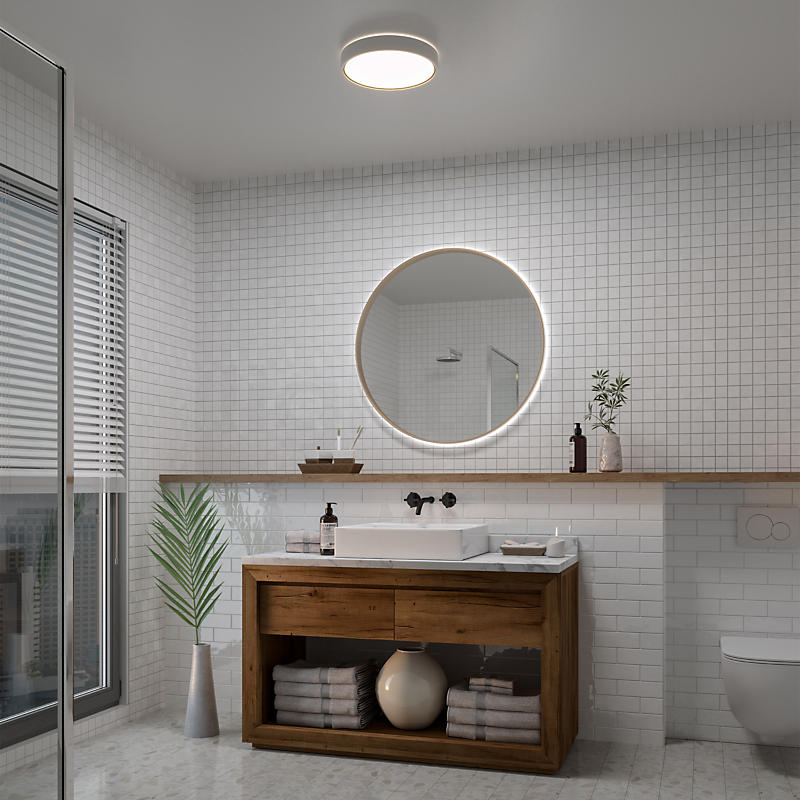
In the bathroom, and especially around the mirror, we recommend using a rather cool light color of at least 3.000 kelvins (K). Neutral-white (up to 4.000 K) or cold-white light (more than 4.000 K) is particularly well adapted for putting on make-up. If you apply make-up using warm-white light, it may look artificial when exposed to daylight.
But the color rendering is even more important in the bathroom than the light color. It is measured in Ra and tells you how faithfully colors of illuminated surfaces are revealed. The sun has the highest possible Ra value, Ra=100. A high color rendering index is very important in the bathroom, because otherwise your face may look pale and ashen. We recommend a luminaire having a color rendering index of at least Ra=90.
Which protection class is required from bathroom lamps?
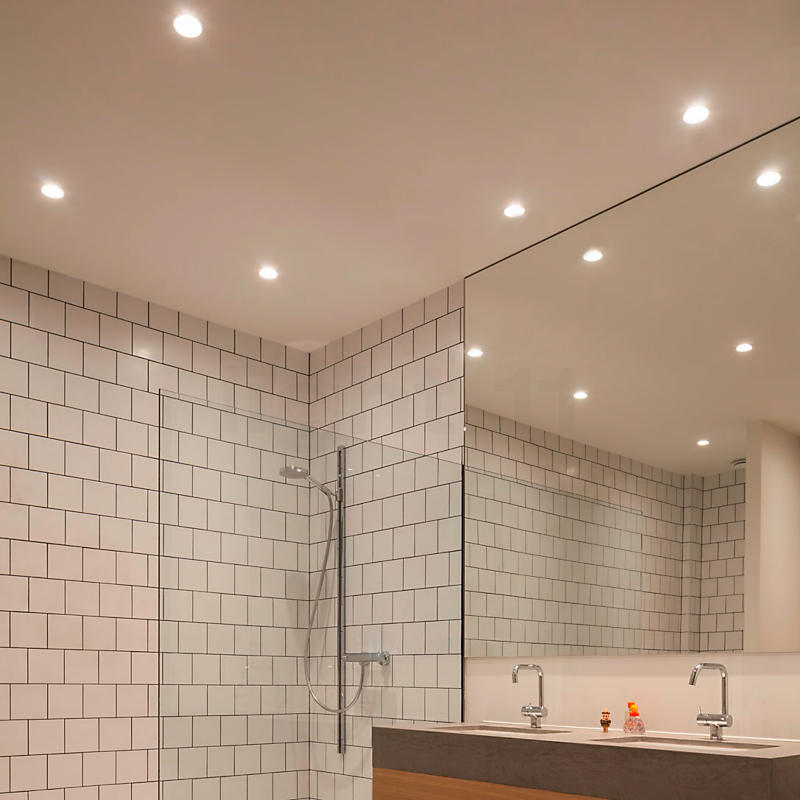
The protection class tells you which safety measures have been taken for preventing electric shock. Contrary to frequent assumptions, there are no legal requirements as to a particular protection class – with one notable exception: the reaching area in the shower.
If you plan to install a luminaire inside or directly above the shower or the bathtub, up to a height of 225 cm, protection class III is required. Devices of this class use very low voltage, called safety extra-low voltage. For a light that is installed higher – for example at the ceiling at more than 240 cm – protection classes I and II are also permitted.
Which IP protection type is recommended for bathroom lamps?
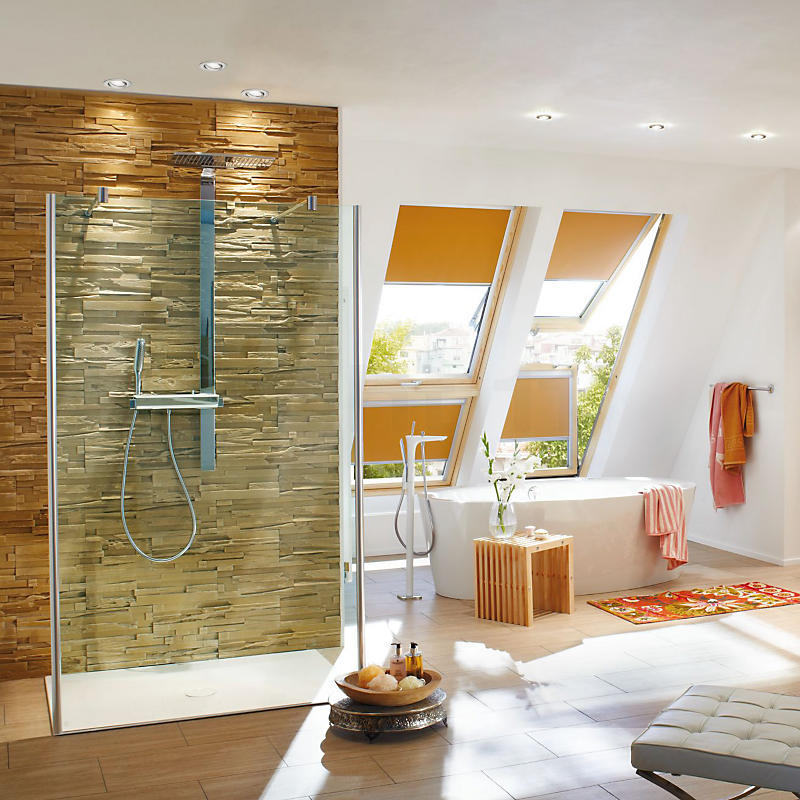
But there are exceptions: the areas around the shower, the bathtub and the washbasin.
- Protection area 0: Inside the bathtub or in the lower are of the shower, bathroom lights are required to have protection type IP 67. They are suitable for temporary immersion. What is more, you are only allowed to mount bathroom lamps having 12 V alternating voltage or 30 V DC voltage.
- Protection area 1: Surfaces up to a height of 225 cm inside the shower require bathroom lights with IP code IP 65. ZThey endure water jets. Also make sure to only mount lamps having 25 V alternating voltage or 60 V DC voltage.
- Protection area 2: If you would like to install a lamp in a 60 cm perimeter around the bathtub, the shower or the washbasin, make sure that the product meets the requirements of protection type IP 44. Splashing of water will not be a problem for these luminaires.
For all other areas (protection area 3), no specific protection type is needed. Therefore, if you decide to mount a mirror lamp above the bathroom mirror or a ceiling light in the middle of the room, there are no special requirements concerning the protection type.
What is essential for mirror lighting in the bathroom?
One important aspect of mirror lamps is the light distribution. We recommend a low-shadowing illumination of the face, which is obtained by using bathroom lamps with opaline diffusors for an even light distribution. Furthermore, a mirror lamp should have at least 800, or even 1.000 lumens and a color rendering index of Ra=90 or more.
You would like to install an oblong mirror lamp in a horizontal position above the bathroom mirror? Adapt the luminaire dimensions to the width of the mirror. For a mirror lamp, we recommend a length that corresponds to 40 to 60 % of the width of the mirror.
- A mirror with a 60 cm width needs a bathroom light with a 25 to 35 cm length.
- A 100 cm wide bathroom mirror should be illuminated by a 40 to 60 cm long lamp.
- A 100 cm wide bathroom mirror should be illuminated by a 40 to 60 cm long lamp.
Our advice: A mirror lamp is an essential element of bathroom lighting, but it is not everything. An optimal illumination of the room as a whole also benefits from a proper room light, for example a ceiling light or spotlights and spots.


